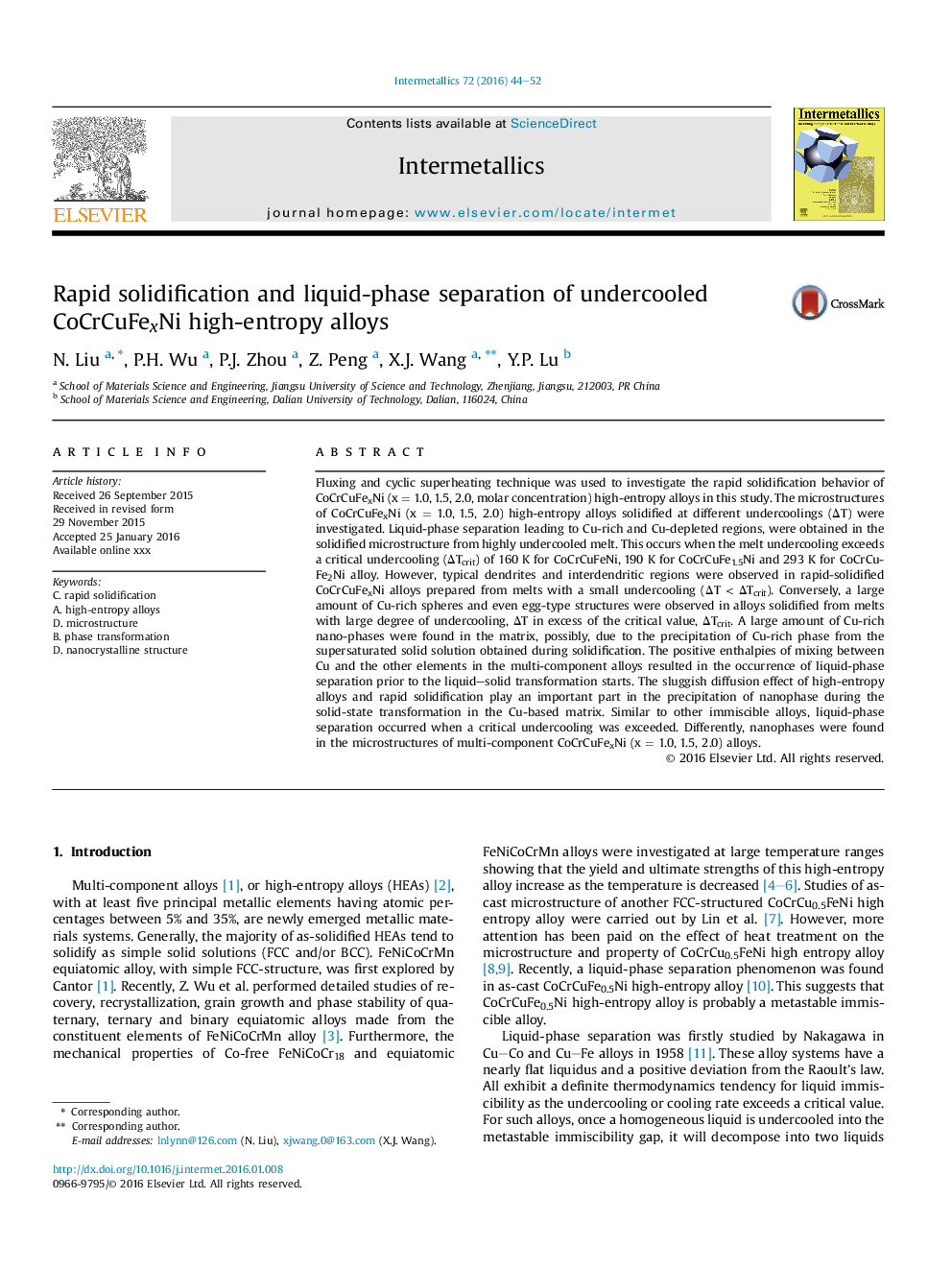| Article ID | Journal | Published Year | Pages | File Type |
|---|---|---|---|---|
| 1599612 | Intermetallics | 2016 | 9 Pages |
Abstract
Fluxing and cyclic superheating technique was used to investigate the rapid solidification behavior of CoCrCuFexNi (x = 1.0, 1.5, 2.0, molar concentration) high-entropy alloys in this study. The microstructures of CoCrCuFexNi (x = 1.0, 1.5, 2.0) high-entropy alloys solidified at different undercoolings (ÎT) were investigated. Liquid-phase separation leading to Cu-rich and Cu-depleted regions, were obtained in the solidified microstructure from highly undercooled melt. This occurs when the melt undercooling exceeds a critical undercooling (ÎTcrit) of 160 K for CoCrCuFeNi, 190 K for CoCrCuFe1.5Ni and 293 K for CoCrCuFe2Ni alloy. However, typical dendrites and interdendritic regions were observed in rapid-solidified CoCrCuFexNi alloys prepared from melts with a small undercooling (ÎT < ÎTcrit). Conversely, a large amount of Cu-rich spheres and even egg-type structures were observed in alloys solidified from melts with large degree of undercooling, ÎT in excess of the critical value, ÎTcrit. A large amount of Cu-rich nano-phases were found in the matrix, possibly, due to the precipitation of Cu-rich phase from the supersaturated solid solution obtained during solidification. The positive enthalpies of mixing between Cu and the other elements in the multi-component alloys resulted in the occurrence of liquid-phase separation prior to the liquid-solid transformation starts. The sluggish diffusion effect of high-entropy alloys and rapid solidification play an important part in the precipitation of nanophase during the solid-state transformation in the Cu-based matrix. Similar to other immiscible alloys, liquid-phase separation occurred when a critical undercooling was exceeded. Differently, nanophases were found in the microstructures of multi-component CoCrCuFexNi (x = 1.0, 1.5, 2.0) alloys.
Related Topics
Physical Sciences and Engineering
Materials Science
Metals and Alloys
Authors
N. Liu, P.H. Wu, P.J. Zhou, Z. Peng, X.J. Wang, Y.P. Lu,
